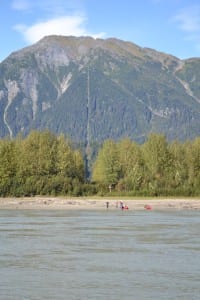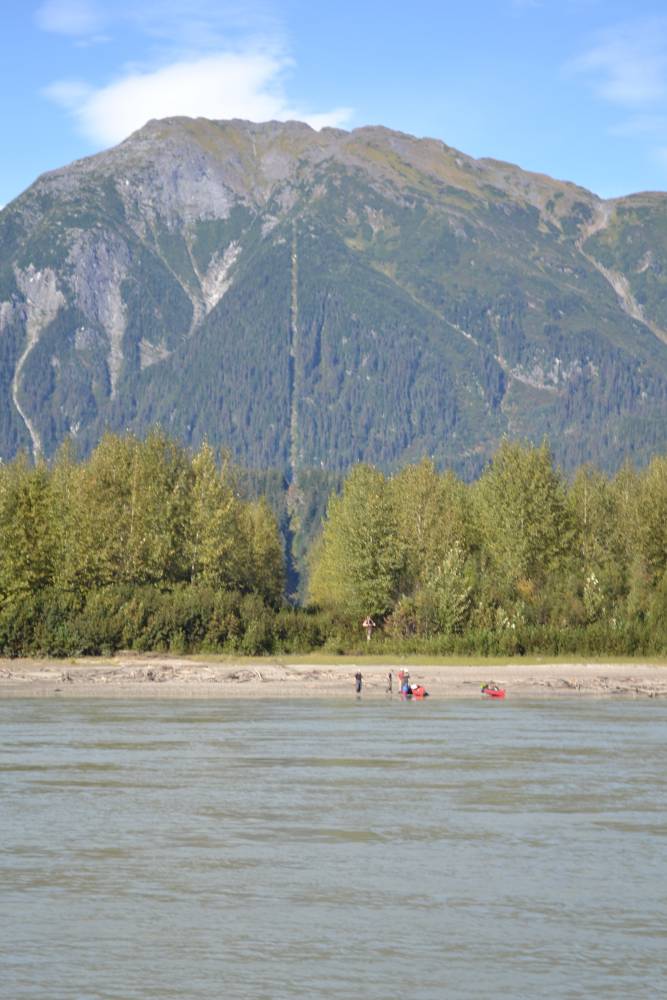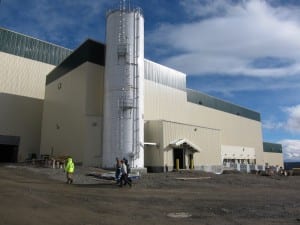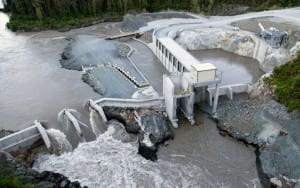Three major rivers that flow out of Canada into Southeast Alaska could provide a combined one billion dollars in value for tourism and fisheries on this side of the border over the next three decades. That’s one of the findings in a new study commissioned by a group seeking to highlight potential impacts to those rivers from the mining industry in British Columbia.
The study puts some numbers to the arguments that Southeast Alaska fishermen, tour operators, tribal leaders and communities have been making about the importance of the Taku River near Juneau, Stikine near Wrangell and the Unuk north of Ketchikan. Salmon Beyond Borders commissioned the report, written by the McDowell Group. The findings are that commercial and sport fishing activity along with tourism dollars from the waterways are worth a combined 48 million dollars a year in economic activity including the paychecks for 400 people in Southeast.
“It’s well known to any of us who live in Southeast Alaska know that salmon and commercial fishing have a substantial impact on our region’s economy and that the visitor industry as well,” said Kirsten Shelton-Walker, project manager with the research and consulting business McDowell Group in Juneau. “And so, we were not surprised but it was interesting to find that the impact of these rivers could be as high as almost a billion dollars over a 30-year horizon.”
The $48 million a year is discounted over time, but it’s estimated to add up to nearly one billion in over the next three decades. The annual dollar amount includes almost $20 million a year in income from jobs in the seafood, visitor and sport fishing industries. Other dollars counted in that figure are from U.S. Forest Service recreational cabins along with hunting and trapping on the rivers. The consultants also included the tax dollars the state collects from commercial salmon catches and tax collected by the Wrangell, Juneau and Ketchikan boroughs from property on the rivers.

Kayakers rest near the U.S.-Canadian border on the Stikine River, marked by a line of cleared trees. (KFSK file photo)
McDowell also included information on Alaska’s commercial fishing catch from two rivers south of the Alaska border, the Nass and Skeena. Salmon from those rivers are caught in Alaska waters.
Salmon Beyond Borders is trying to highlight what’s at stake if mines operating and being developed across the border in British Columbia suffer an environmental disaster like the failure of the Mount Polley tailings dam in central B.C. in August of 2014.
Heather Hardcastle, campaign director with the organization, said the ultimate goal is not to stop development of the mines. She said her organization wants a greater say for Alaskans in how the mines are developed and environmental safeguards are set for mine tailings storage.
“Ultimately we want an agreement or set of agreements between Canada and the United States that does provide enforceable protection for those of us who are sustained by these rivers,” Hardcastle said. “And so by trying to tell the story of what these rivers mean, that’s a big part of our work. So this is a first step in doing that.”
Hardcastle said another part of the story to tell in the future would be the environmental importance the river systems. Large open pit precious metal mines are already operating or planned near tributaries of the Stikine and Unuk.
The state and British Columbia this fall signed a statement of cooperation on transboundary mining, promising a larger role for Alaskans in planning and permitting. Hardcastle says Salmon Beyond Borders will use this report to continue pushing for oversight from both nations’ federal governments. The group’s report only focused on economic activity on this side of the border.
The Alaska Miners Association also commissions the McDowell Group for an annual look at the economic value of mine projects within the state. However, executive director Deantha Crockett said her organization has not looked at the economic value of BC mines to Alaskans. She said the AMA supports the statement of cooperation between the state and provincial governments and expects that agreement, signed this fall by Lieutenant Governor Byron Mallott, will better define impacts, positive or negative in the future.
“What is important to keep focused on is the technical working group that the Lieutenant Governor has provided for to fully understand how those mines across the border work, will in the long-term, give us the information we need to evaluate whether those great economic benefits that this study puts on display are at jeopardy or not,” Crockett said.
An annual Pricewaterhouse Coopers report estimates that mining in British Columbia brought in more than five point seven billion dollars in revenue and employed more than eight thousand people last year across the border. Companies have also built hydro-electric energy projects on tributaries of the Stikine and are planning more.














